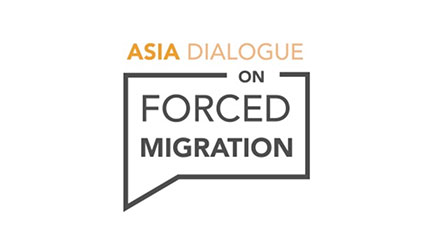It’s about time the schools funding debate was re-opened, writes Ben Eltham, because on any analysis, the current situation is a mess
Schools policy is back as an election issue. In the past week, both Julia Gillard and Tony Abbott have promised parents tax breaks for education expenses. Labor’s policy was relatively modest, allowing parents to claim for school uniforms on top of their current allowances for things like laptops and schoolbooks. The Coalition’s announcement was more generous, allowing parents to claim for government and private school fees.
It is the tax break for private school fees that has generated much debate. Understandably, independent and religious schools welcomed the announcement. Public education advocates were aghast, seeing Abbott’s policy as the beginning of a new Coalition attempt to privatise education or, even worse, as an attempt to introduce a type of voucher system for the public funding of schools.
Meanwhile, conservative education commentator Kevin Donnelly has claimed that Labor will renege on its pledges to maintain support for private schools. Donnelly wants more Commonwealth funding for these schools, not less.
For those seeking genuine public policy discussion in this election campaign, the re-opening of the schools debate is a welcome development. It gives us the chance to revisit the current arrangements for federal funding of schools, and to examine whether there is a need for reform. This is sorely needed because, on any rational analysis, schools funding is a mess.
The way the Commonwealth and state governments fund schools in Australia is poorly understood. That’s not surprising, because the current system is complex, opaque and politically charged. There is a maze of different policies and formulas, as this excellent policy paper by the Australian Council of Educational Research’s Andrew Dowling points out. Funding is fragmented between the Commonwealth and states and territories, and across the system, with different formulas and policies in place for government, independent and Catholic schools.
Public schools are chiefly funded by state governments, while the federal government shoulders the bulk of the responsibility for private schools and universities. State governments also fund private schools, however, and the Commonwealth contributes smaller amounts of funding to state schools – and there are many quirks and inconsistencies in the way the various formulas are calculated and applied.
But sound policy has rarely been the primary motivation when it comes to Australian schools funding policy. As Andrew Dowling observed in his ACER paper, despite the many different systems for channelling funds to schools in this country, “none operate in unison and none calculate their combined effect.” Dowling concluded “there is no unified system for gauging the existing resource levels of schools” and that “consequently, there is no understanding of the real levels of need that exist at individual schools.”
If the funding system is complex, the results are all too clear. Elite private schools boast gleaming new classrooms, libraries and sports facilities, while government schools are increasingly run-down and dilapidated. And yet, such is the level of public debate about schools policy in this country that the Rudd government’s highly successful schools stimulus program was viciously attacked by the Opposition and many parts of the media for being wasteful and unnecessary – despite findings by the auditor-general that principals of primary schools (the focus of the audit) were overwhelmingly pleased with their new buildings.
The huge dollars now flowing to non-government schools in Australia means that the increasing privatisation of schools in Australia is actually a kind of accounting trick. While many independent schools look, feel and claim to be private, they actually receive the vast bulk of their funding from the taxpayer. As Lyndsay Connors has argued: we really have two public school systems: one with some hefty co-payments by parents, and an under-funded version run along traditional lines. The result is an increasingly inequitable and unfair education system.
What hasn’t had much attention in the campaign so far is the fact that schools funding is up for review if Labor returns to government. Although the party is desperate for funding not to become an election issue, the very fact that the Review’s terms of reference – released earlier this month by the education minister Simon Crean – will “draw from the best available evidence from Australia and around the world” must have wealthier independent schools worried. If the aim of the review really is, as the Government says, “to be fair and transparent and not advantage one system over another,” then almost by definition they are in for some reduction in their funding.
In the meantime, with analysts like Kevin Donnelly dominating the schools debate in this election campaign, the media has focused almost exclusively on the interests of private schools — which teach just 30 per cent of Australian students.
This is an edited version of an article which first appeared on Inside Story. Read the original article here.
 More Than Luck is a collection of ideas for citizens who want real change edited by Mark Davis and CPD Executive Director Miriam Lyons. A to-do list for politicians looking to base public policies on the kind of future Australians really want, More Than Luck shows what’s needed to share this country’s good luck amongst all Australians – now and in the future. Click here to find out more. Like what you’ve read? Donate to help make good ideas matter.
More Than Luck is a collection of ideas for citizens who want real change edited by Mark Davis and CPD Executive Director Miriam Lyons. A to-do list for politicians looking to base public policies on the kind of future Australians really want, More Than Luck shows what’s needed to share this country’s good luck amongst all Australians – now and in the future. Click here to find out more. Like what you’ve read? Donate to help make good ideas matter.



